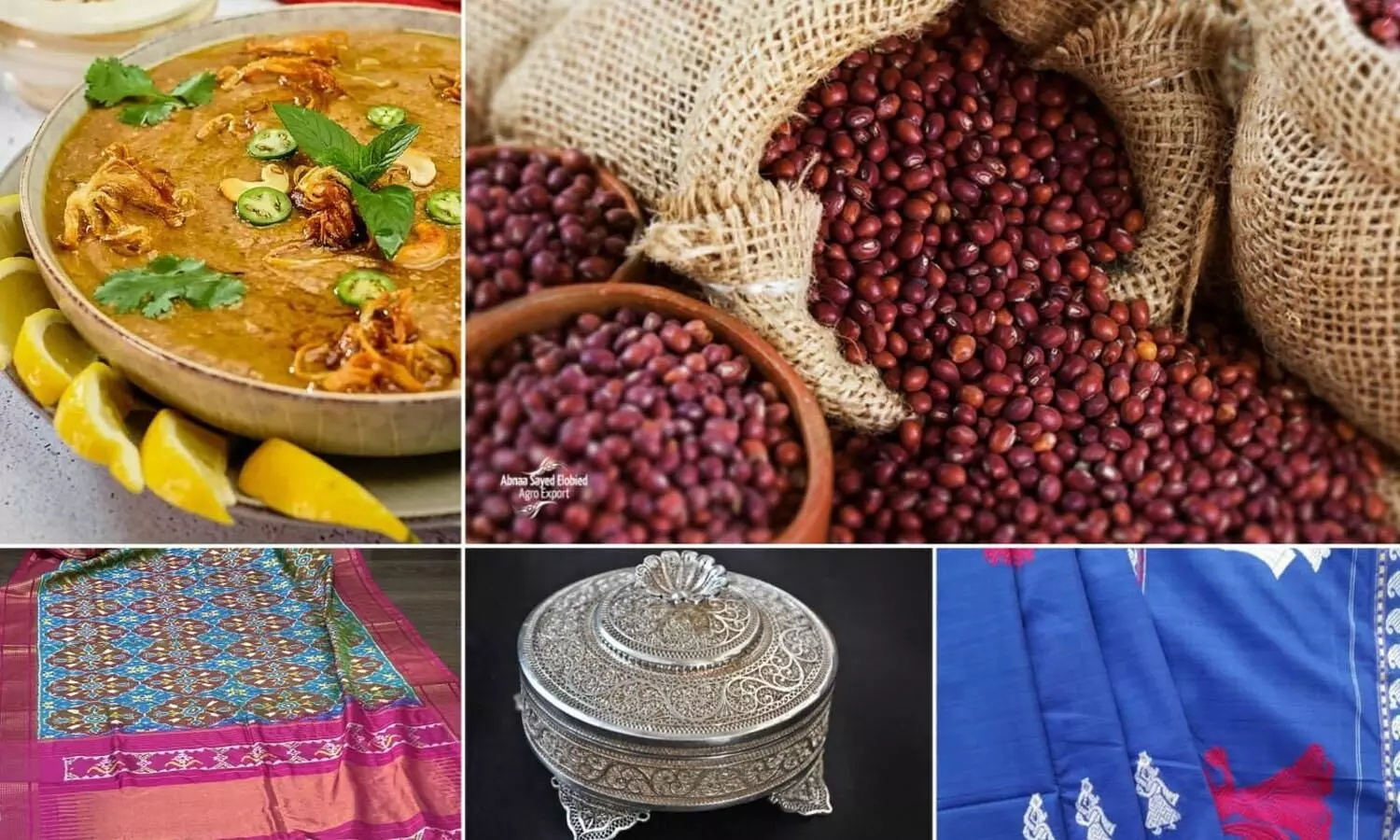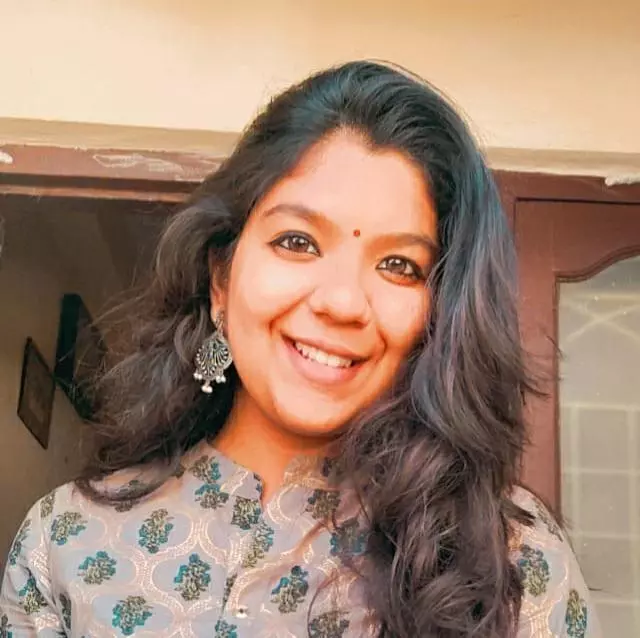Telangana's fabled list of GI tag products touches 15, many waiting to join
Products with Geographical Indication tags get legal protection while their traders get economic prosperity

HYDERABAD: With the addition of Tandur's red gram, Telangana now has a total of 16 products with Geographical Indications (GI) tags, including handlooms, food, furniture, paintings, metal and what not, which show the diverse and rich culture of the State.
GIs give a distinguished identity to the products, marking their geographical origin, authenticity and special qualities unique to their particular region. As a result, products with GI tags get legal protection while their traders get economic prosperity.
In India, the GI tags are given by the Geographical Indications Registry and are governed by Geographical Indications of Goods (Registration & Protection) Act, 1999.
The man who strived for the GI tag of Tandur Red Gram among other products, GI agent and Head of Legal and IPR at Resolute Group Subhajit Saha, speaking to NewsTAP, said, "India has a potential of more than 5,000 GIs to be registered by 2025. Already, 1,000 plus applications are filed and many more being identified and will be taken up. The challenge remains to brand and market GIs for better market opportunities for producers. Telangana has many other products like Nizamabad turmeric, Tandur limestone, Balanagar custard apple etc, which need to be studied and explored for GI registration."
Which are Telangana's GI tag registered products?
Pochampally IKAT

Pochampally Ikat is a weaving style that employs resist dyeing technique to impart colors to the yarns before their interlacement. It is made of natural materials such as cotton or silk or a combination of both. The fabric so woven has been used as sarees for centuries, and is now also used for furnishing, textile and textile goods.
It was the first product from Telangana to get a GI tag in 2005.
Karimnagar Silver Filigree

Karimnagar's famous silver filigree is an art form patronised during the rule of Nizams. It is a form of intricate artwork on pieces of silver, majorly jewellery or other metalwork.
It received a GI tag in 2007.
Cheriyal Scroll Paintings

The origin of Cheriyal Paintings can be traced back to 5,000 years. This style of artwork uses these paintings as a visual aid to recite tales from 'Ramayana' and 'Mahabharata'.
Employing traditional techniques, Cheriyal paintings are created on cloth that might run to metres in length. In the present day, Cheriyal paintings are done in a variety of goods such as masks, marriage gifts, jewellery boxes, brass paintings and greeting cards.
This painting form received a GI registration in 2008.
Nirmal Toys and Crafts

Nirmal toys are delightful expressions of art capturing natural forms and made from the wood of 'poniki'. These trees are found in the forests and hills adjoining Nirmal. The artisans are not only experienced but are also well versed in the theoretical aspects of the craft. These wooden toys are painted in colours which are very pleasing and appealing to the eye. Nirmal toys are unique, being light in weight, not easily breakable.
Nirmal Toys received a GI tag in 2009.
Nirmal Furniture

Nirmal Furniture is made of teak wood with Nirmal Paintings, originates from Nirmal, Adilabad district and from city of Hyderabad. These are traditional crafts which reflect the tradition, culture and customs of the people. No nails are used, only wooden pegs are used for assembling the parts of the furniture along with adhesives.
This furniture form received a GI tag in 2009.
Hyderabadi Haleem

Haleem literally means 'patience' because it involves long hours of preparation. It has essential basic ingredients of wheat, ghee and meat and various spices, nuts and Basmati rice along with aromatic substances which enhance the aroma and taste of the Haleem. Historically, the origin of Hyderabad Haleem can be traced to the period of Asaf Jahi dynasty which began from the year 1724.
Haleem, the only food dish in the list of Telangana's GIs, was given a GI tag in 2010.
Pembarthi Metal Craft

Pembarthi metal craft is one of the finest and most ancient crafts of India, dating back to more than 5,000 years. The metal craft work is made of pure brass.The range of goods produced vary from all types of intricate brass ware, temple pooja and utility items, temple utsavams, vigrahas, household items and containers, decorative items, wall hangings and panels.
Pembarthi metal crafts got a GI recognition in 2010.
Gadwal Sarees

Gadwal sarees are often regarded as Pooja Sarees by local women who wear them for religious festivals and for traditional functions and occasions.
The origin of Gadwal Sarees can be traced back to about 200 years ago. At that point of time the present township of Gadwal was the capital of a small Kingdom, locally called a "Samasthanam".
The maharani of the said kingdom namely 'Adhi Lakshmi Devamma' promoted the craft with the help of a few weavers who had come to Gadwal from various coastal areas. Initially Gadwal sarees were called "Mathiampeta'. As the entire industry was centered in and around the present day township of Gadwal, as time went by, the sarees produced here came to be called as "Gadwal Sarees".
The production of Gadwal Sarees is very unique and traditional in a way that they are hand woven. After production, each Gadwal Saree undergoes thorough inspection for their quality by the master weaver. The master weaver is a person who has expert knowledge in all aspects relating to this process of making Gadwal Sarees which include the critical art of visualization of design, their layout, orientation and intricacy in the body, border and pallu of the saree. Only upon the personal inspection of the master weaver are the materials made ready for the market.
Siddipet Gollabhama

Siddipet is famous for Gollabhama sarees which are unique for their inlay technique and motifs. These sarees get their name from the decorative motifs that are used - the Gollabhama (figure of a milkmaid carrying a milk pot on her head and one in her hand). The intricate Gollabhama sarees are neither embroidered nor printed but are meticulously woven into the border of the saree.
The Gollabhama Sarees got the GI in 2012.
Narayanpet Handloom Sarees

The origin of the Narayanpet Sarees can be traced back to the period around 1630 AD, when Chatrapati Shivaji was travelling across the Narayanpet region. The knowledge of weaving them is passed on from one generation to the other. These sarees are made of pure cotton, pure silk or a mixture of silk and cotton with thread and zari work. Zari border is always in the form of bold ribbon as border and in pallu. There will be a compulsory border on both sides of the saree. Water quality in the region contributes to the quality of colour with the sarees.
Narayanpet sarees were given the GI tag in 2013.
Puttapaka Telia Rumal

Puttapaka Telia Rumal is known throughout the world for its elegant design, patterns and natural dyeing methods. Infact Puttapaka Telia Rumal refers to the oily touch of the cloth.The making of Puttapaka Telia Rumal involves a very old and traditional method of production. It includes gingelly oil and natural vegetable dye which gives it a distinct and unique quality in the form of its texture and smell.The pattern in the Puttapaka Telia Rumal consists of a variety of images, based around the subdivisions of a square.
The Telia Rumal was given a GI tag in 2015.
Adilabad Dokra

Dokra, also known as Bell Metal Craft is a tribal craft which is quite popular in tribal regions of Telangana. The Dokra craftsmanship is practised mainly by Woj Community (also known as Wojaris or Otaris).The making of Dokra crafts involves an ancient casting technique called, lost wax technique, wherein a clay model is made as the core over which wax threads are wrapped around to form a layer, bake the clay mould, allow the wax to flow-out and then pour the molten metal into the mould.
The Dokra craft of Telangana got the GI tag in 2018.
Warangal Durries

Warangal Durries can be characterised as multi-colored durries woven using the weft interlocked technique. Warangal's prominence in Durries-making can be attributed to the availability of Cotton in the city, coupled with presence of spinning mills like AzamJahi Mills. It helped Warangal as a natural habitat for cotton based weaving industry especially durries and their development.
The Warangal Durries got the GI tag in 2018.
Nirmal Paintings

Nirmal Paintings are special paintings that are made on wood as the medium instead of canvas and or paper, with the use of nitrocellulose colors and special gold powder. Nirmal Paintings are very unique because the medium used for painting is wood. The typical characteristic of a Nirmal Painting is that a sketch of the art is traced and then filling of colors is done to make the painting. Also the appearance looks very beautiful and the finish is very smooth. The life of the painting easily comes to 50 years and beyond.
Nirmal Paintings got the GI tag 10 years after Nirmal furniture and Nirmal Toys, in 2019.
Tandur Red Gram

The fertile, deep-black soil in the Tandur region, which also contains enormous amounts of the clay mineral attapulgite and enormous deposits of limestone, is responsible for the unique qualitative attributes of Tandur red gram.
The Tandur Red Gram got the GI tag in December 2022.



